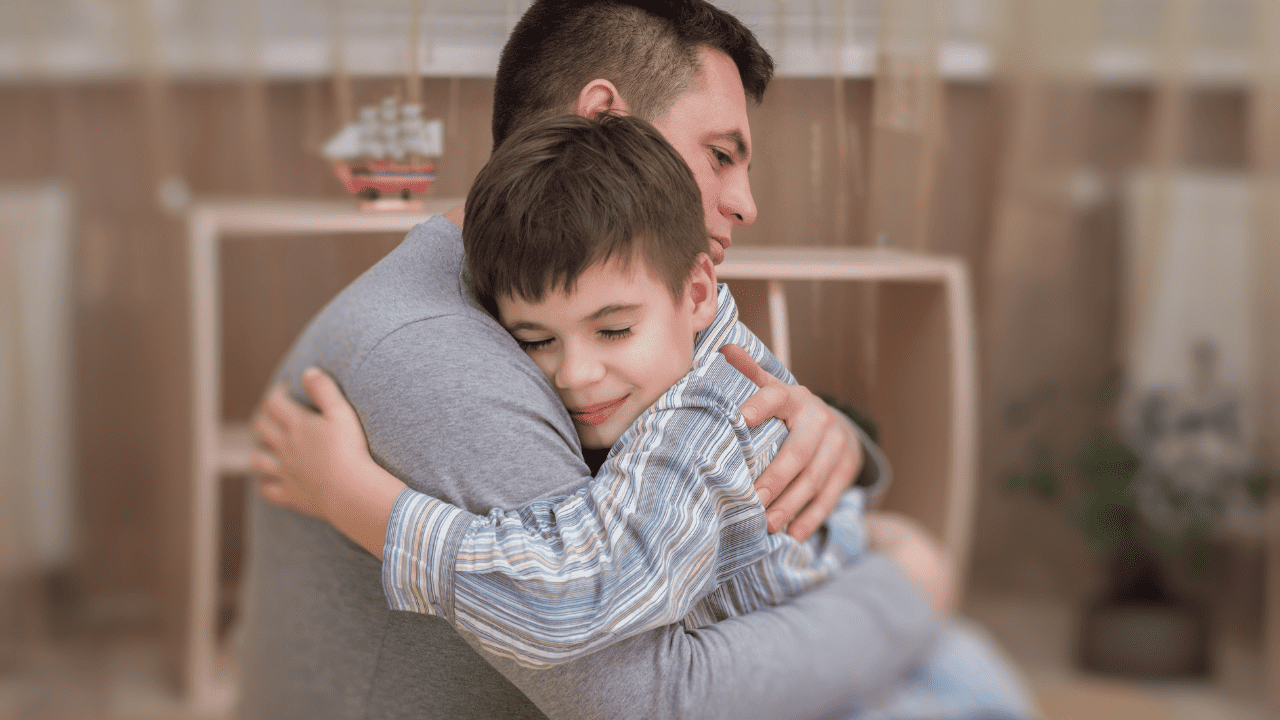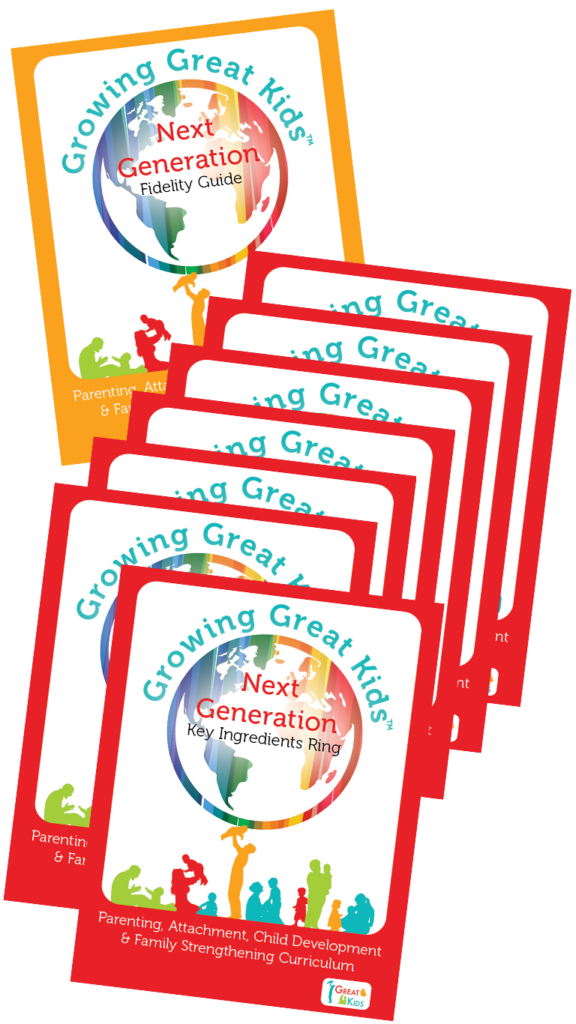 | | | | About the Author Melissa Weekes is a Product Development Specialist. Prior to joining Great Kids® in 2018, she worked as a home visitor with Public Health Services where she used the Growing Great Kids® Curriculum. Melissa lives in Nova Scotia, Canada, with her husband and enjoys any opportunity to be creative! |
It was a last-minute arrangement. I offered to watch the kids for a couple of hours, so my cousin could run some errands. I was excited to see the children, and they were just as happy to see me. Their parents said goodbye, and we were busy playing when out of the blue, big tears rolled down one child’s cheeks. Drawing them into my lap, I had no idea what might be wrong. This dear child then reminded me that almost two years ago, I had looked after them for two days while their mom was in the hospital. They thought their parents would be gone again for days.
First, I was floored by this child’s recollection! Second, I realized that I’d forgotten to communicate what was happening to the children in all the flurry of activity. And third, I recognized that a memory had been activated for this child of being separated from their parents for an extended time. Suddenly, this child’s world didn’t feel quite so safe.
Thankfully, with empathy, hugs, and reassurance, their sense of security was restored. This impressed upon me the importance of nurturing relationships and how we often underestimate what children are feeling or experiencing.12
I considered that if this kind of situation could make children from stable and nurturing environments feel insecure, how much more frequent, or intense might these feelings be for children who experience out-of-home care? The term “out-of-home care” can refer to both a formal placement in the foster care system and an informal arrangement with extended family.6
Many reasons can lead to children being placed in out-of-home care. We know that parents want the best for their children, and they sometimes face individual, family, or community barriers that get in the way of being able to provide a stable and nurturing home.10
Not surprisingly, the experts share that kids often need additional social and emotional support when they’ve experienced out-of-home care.8,9 Some of the reasons for this can include:
- Children’s cues may be difficult to read based on inconsistent responses in the past,8,9
- Kids may behave in ways that made sense for them in their birth home but don’t work in their new environment,8,9
- Trauma and grief can hit children in waves and be expressed through emotions and behaviors that may seem inappropriate or disconnected from what’s happening at that moment,12
- Stress can show up through disrupted eating, sleeping, or toileting patterns, and older kids may face the additional stress of stigma and social isolation,5,12
- Many children in out-of-home care experience developmental delays, and5,8,9
- Multiple changes in homes, schools, and communities can make life even more difficult for these children.5,8,9
While these challenges can seem overwhelming, it’s important to consider the capacity for the human spirit’s perseverance, strength, and resilience.2 Individuals are not just defined by their difficult experiences but also by their strengths, adaptability, culture, and sense of belonging.2,12
So how can we support resilience in children experiencing out-of-home care? Some of the things we can do include:
- Adopting the strengths-based beliefs that no matter what challenges a child faces, they can achieve remarkable things AND it’s never too late to build resilience,1,5
- Being open to learning about child development and adjusting our expectations to fit each child’s unique developmental path, as Rachel mentioned in last month’s blog,3,8
- Acknowledging difficult experiences children have faced and helping them feel safe in moments of alarm,12
- Establishing routines and consistency to provide children with a sense of normalcy and stability,1,5
- Providing positive experiences and opportunities to grow and learn that give children a sense of competence, 1,5
- Practicing cultural humility, and12
- Connecting children to resources in the community and collaborating with service providers to share wins and sources of stress.3,5,9,12
Most importantly, we can support, honor, and strengthen the primary relationships in a child’s life.12 That’s because these kinds of connections lead to healing.1,2,4 And it’s not just primary relationships, children need allies.5 Any adult in their life can play an important role in building resilience.3,5,12 Nurturing relationships provide a sense of safety and belonging and grow areas of the brain responsible for learning and emotional well-being.11 When adults show up for a child with empathy and love, even in the difficult moments, they communicate, “I see you” and “you’re valued and lovable.”7,12 This creates an environment where, like for the child I was watching, kids can feel safe and secure and experience hope restored.12
References
1. Center on the Developing Child at Harvard University. (2015). Inbrief: The science of resilience. https://developingchild.harvard. edu/resources/inbrief-the-science-of-resilience/
2. Middelton-Moz, J., Mishna, F., Martell, R., Williams, C., & Zuberi, S. (2021). Indigenous trauma and resilience: Pathways to ‘bridging the river’ in social work education. Social Work Education. https://doi.org/10.1080/02615479.2021.1998427
3. Murray, C. (2018, May 25). When a foster child enters your care: Suggestions from a foster parent. NAEYC®. https://www.naeyc.org/resources/blog/when-foster-child-enters-care
4. Perry, B. D., & Winfrey, O. (2021). What happened to you? Conversations on trauma, resilience, and healing. Flatiron Books.
5. Rutman, D., & Hubberstey, C. (2016). Fostering success: Improving educational outcomes for youth in/from care. University of Victoria. https://cwrp.ca/sites/default/files/publications/FOSTERING-_0.pdf
6. Saint-Girons, M., Trocmé, N., Esposito, T., & Fallon, B. (2020). Children in out-of-home care in Canada in 2019: CWRP information sheet #211E. Canadian Child Welfare Research Portal. https://cwrp.ca/sites/default/files/publications/Children%20in%20out-of-home%20care%20in%20Canada%20in%202019_0.pdf
7. Siegel, D. J., & Bryson, T. P. (2021). The power of showing up: How parental presence shapes who our kids become and how their brains get wired. Ballantine Books.
8. Wotherspoon, E. (2013, September). Social and emotional development in the early years: Information sheet for health care providers. BC Healthy Child Development Alliance. https://www.childhealthbc.ca/sites/default/files/health_care_providers_information_sheets_september_2013.pdf
9. Wotherspoon, E., & Petrowski, N. (2008). Supporting the emotional development of infants and toddlers in foster care: CECW Information Sheet #60E. Centre of Excellence for Child Welfare. https://cwrp.ca/sites/default/files/publications/EmoNeedsFoster60E.pdf
10. Zero To Three. (n.d.). Child welfare: Transforming child welfare to child well-being. https://www.zerotothree.org/issue-areas/child-welfare/
11. Zero To Three. (2016, May 26). Helping young children in foster care. https://www.zerotothree.org/resource/helping-young-children-in-foster-care/ 12. Zero To Three. (2022, June 30). Talking trauma with young children [Video]. YouTube. https://www.zerotothree.org/resource/webinar-talking-trauma-with-young-children/


